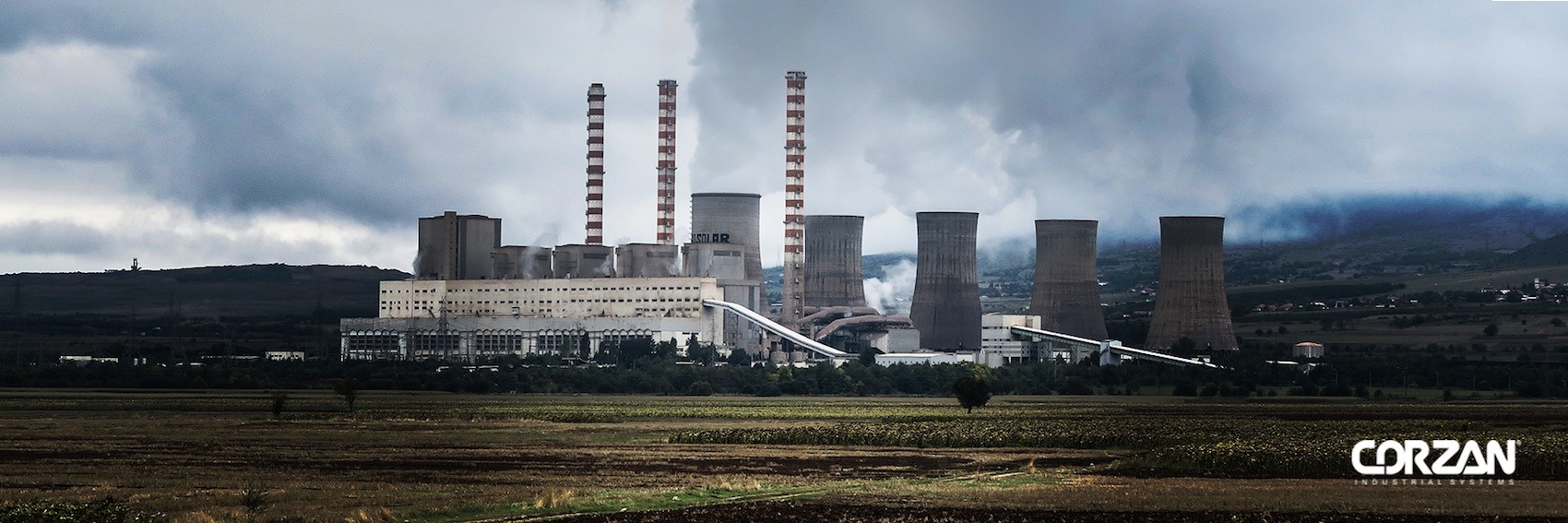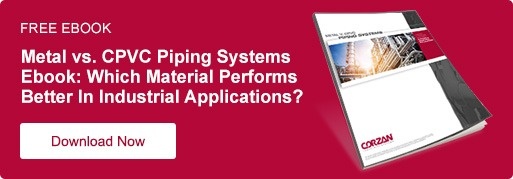HOW TO OPTIMIZE EFFICIENCY AND RELIABILITY IN POWER GENERATION COOLING WATER SYSTEMS
Power generation plants rely on systems that are both efficient and reliable. Efficiency comes from the optimal usage of energy, while reliability is a result of minimal breaks and corresponding downtime.
An important cog in a power generation plant is the cooling water treatment system, which removes unwanted heat within a plant.
In the United States, for example, thermoelectric power plants—including coal, nuclear, natural gas and oil—make up about 90% of all power generation plants. Though processes within each type of thermoelectric plant differ, each requires cooling.
When the power generation plant’s cooling system cannot efficiently remove heat, especially in warmer climates, the entire plant suffers costs of excess water, wastewater and energy.
For cooling systems—which include water loops, towers and headers—our product and engineering team list the primary issues plant managers face, and how schedule 80 CPVC piping can help prevent these problems.
Cooling Loop Issues that Influence Efficiency and Reliability
In thermoelectric power plants, water is boiled to create steam, which is then used to turn turbines to manufacture electricity.
Water cooling systems are required to cool the steam from the turbine before it exits the power plant. The colder the outside temperature is compared to the temperature in the turbine, the more efficient the power generation plant runs.
The steam transfers some of its heat energy to the cooling system water, which is then carried away.
Large power plants will often use once-through cooling systems, which take water from a nearby body of water, circulate it through the system once, and then discharge back into the body of water slightly warmer.
Alternatively, a wet-recirculating system (or closed loop) recycles the same water, cooling the water in water towers or chillers before reintroducing it to the system.
During any cooling process, a number of problems can result from materials that are incompatible with the untreated water or the chemicals used to treat the raw water.
Internal Corrosion
When internal corrosion occurs, it can be either general or localized. General corrosion occurs uniformly across the run of pipe, while localized corrosion is concentrated in certain areas, typically as crevice or pitting corrosion.
Both general and localized corrosion can have negative effects on efficiency and costs even before the need for replacement is realized. Specifically, corrosion can:
- Decrease the pressure rating as the pipe’s walls thin.
- Diminish the flow rate, creating more demand from the pumps that cycle the water into the cooling systems, which are often calibrated based on precise temperature requirements.
- Increase downtime and lost opportunity cost due to repairs. Cooling water systems are required by other systems in the plant to run efficiently, meaning entire sections of the plant may need to shut down during a cooling system repair.
- Increase installed cost, which includes the new material, skilled laborers, and time required for new installations.
- Contaminate the fluid as corroded pieces deposit into the flow.
Metal piping can be incompatible with raw water, as it often falls outside of a neutral pH. Because corrosion is accelerated at higher temperatures, and many power plants use raw water in cooling processes, a metal system will often experience corrosion.
Schedule 80 CPVC, however, stands up to both acidic and alkaline, and is resistant to corrosion from a wide range of waters up to its highest working temperature of 200°F (93.3°C).
Scaling
As water passes through cooling lines, the process and fluid can cause scaling. Two main scaling factors are pH levels (alkalinity / acidity) and the temperature.
When raw water is used for cooling water, the likelihood of scaling increases significantly because common scaling agents are often present in untreated water, including:
- Calcium carbonate
- Calcium phosphate
- Magnesium silica
- Silica
When scaling occurs, metallic minerals fall outside of their solubility range, whether due to the pH and/or temperature of the water. Mineral ions that drop out of solution attach to the pipe walls. These impurities will harden and build up over time.
Long pipe runs of continuous processing are less prone to scaling, as this occurs most frequently where water flow slows or eddies.
The greater the scaling the narrower the pipe diameter becomes. This puts excess demands on the system, requiring more energy from the pumps to continue processing through at a consistent rate, increasing costs.
Also, the volume of water flowing per minute can only absorb a certain amount of heat. If scaling reduces that flow, it limits heat transfer, and thus system efficiency.
To counteract the negative effects of scaling, nonmetallic piping materials may be specified, as industrial schedule 80 CPVC piping is significantly less susceptible to scaling than metals.
Biological Fouling or Microbial Contamination
Though cooling water systems are not concerned with water quality or purity in the same way the food and beverage industry is, power generation plants want to avoid microbial contamination in their cooling lines, towers and headers.
How this accumulates is through microbial slimes, which are masses of microscopic organisms and their waste products. Natural bodies will bring these microbes into the cooling system, and microorganisms can blow into uncovered treated water systems.
One specific problem microbial contamination creates for cooling is that microbial slime reduces the efficiency of heat transfer because it serves as a layer of insulation. The microbial slime can also be corrosive to metallic materials.
Consideration for microbial organism growth should be given when stagnant water is present. When systems are turned off, whether due to normal hours or unplanned repairs, microorganisms can appear and multiply. Avoid standing water by specifying reliable materials and by closely controlling processes.
In terms of material selection, those with inherently smoother, consistent surfaces will resist the clinging and buildup of biofilm and other microbial organisms. The charts below show schedule 80 CPVC’s smoothness compared to stainless steel.
Corzan® CPVC

Stainless Steel

External Corrosion
When cooling loops are installed underground or outside, external corrosion must also be considered. Considerations for material selection with underground installations include:
- Corrosion resistance, specifically with how compatible the piping material is with the soil’s properties.
- Abrasion resistance, and how the material will resist wear of shifting rocks and other abrasives.
- Impact strength, considering the weight that will be placed on the material, including any heavy machinery that may be involved.
- Installation or joining methods, and how they decrease the pressure rating and influence the three properties mentioned above when joined.
For outdoor installations that do not require the pipe to be buried, also consider the UV weatherability and thermal conductivity of material.
Metal piping’s reputation for sunlight exposure is high, but CPVC contains additives that make it outperform a viable choice for outdoor installations. In terms of thermal conductivity, industrial schedule 80 CPVC’s is approximately 1/300th that of steel, meaning it will better maintain the internal temperature as the external temperature increases—and vice versa.
In general, power generation plants want to optimize uptime, minimize repairs and offer extended reliability. Learn more about how CPVC fares in external environments in terms of:
Learn More About How Metal and CPVC Piping Systems Compared
Whether you are comparing materials for a new build installation, or considering an upgrade for your current system, the Metal v. CPVC Piping Systems Ebook will address the most important issues.


